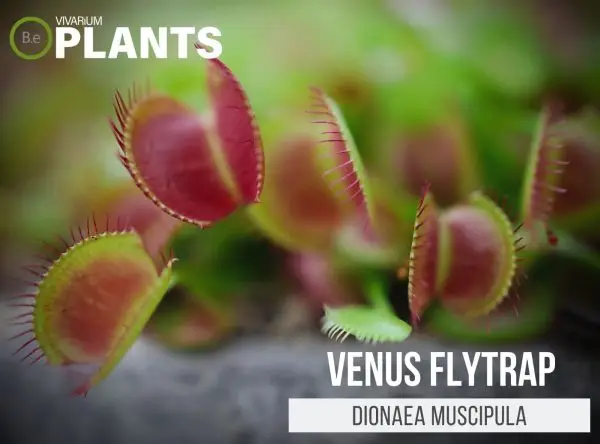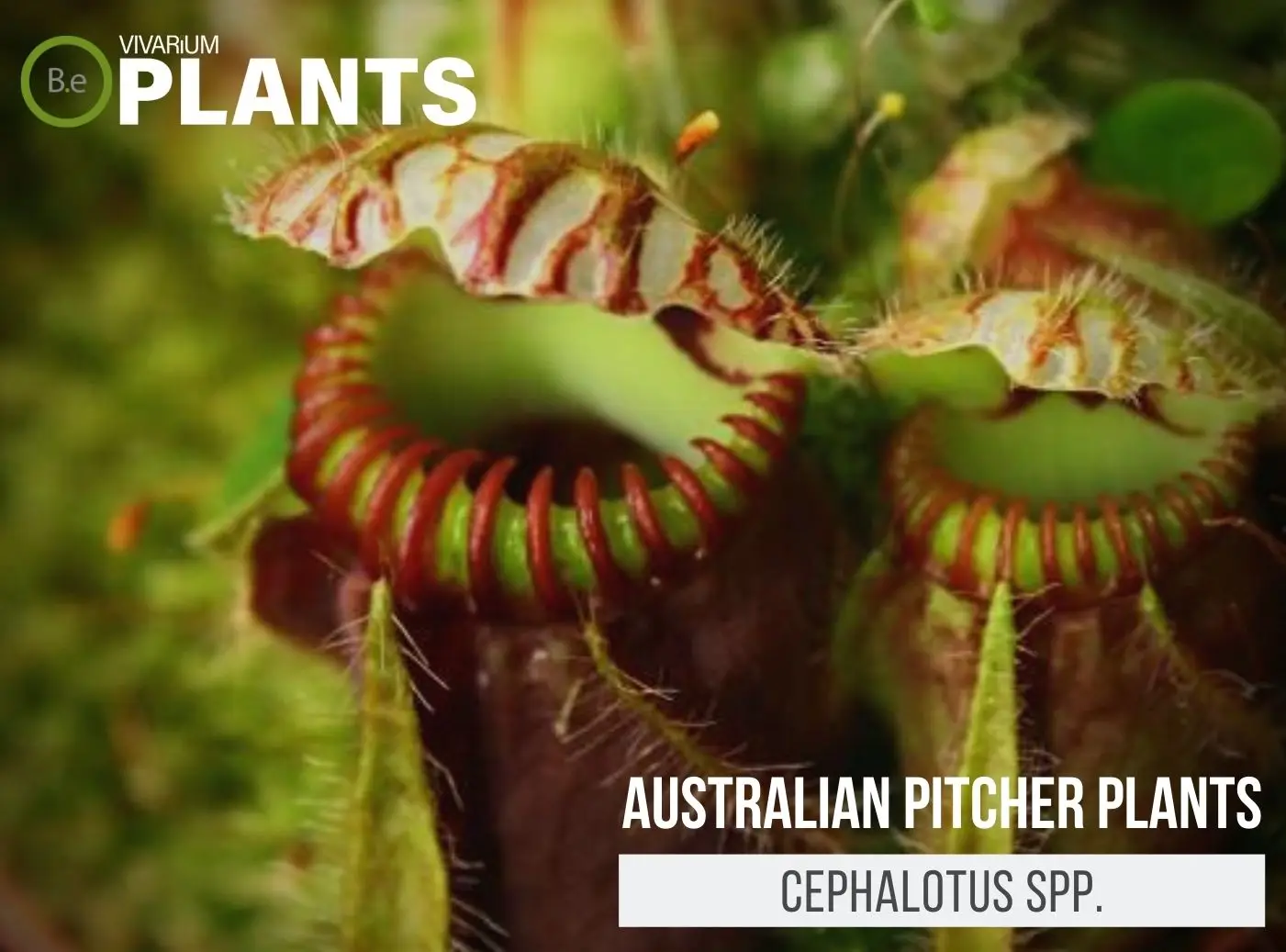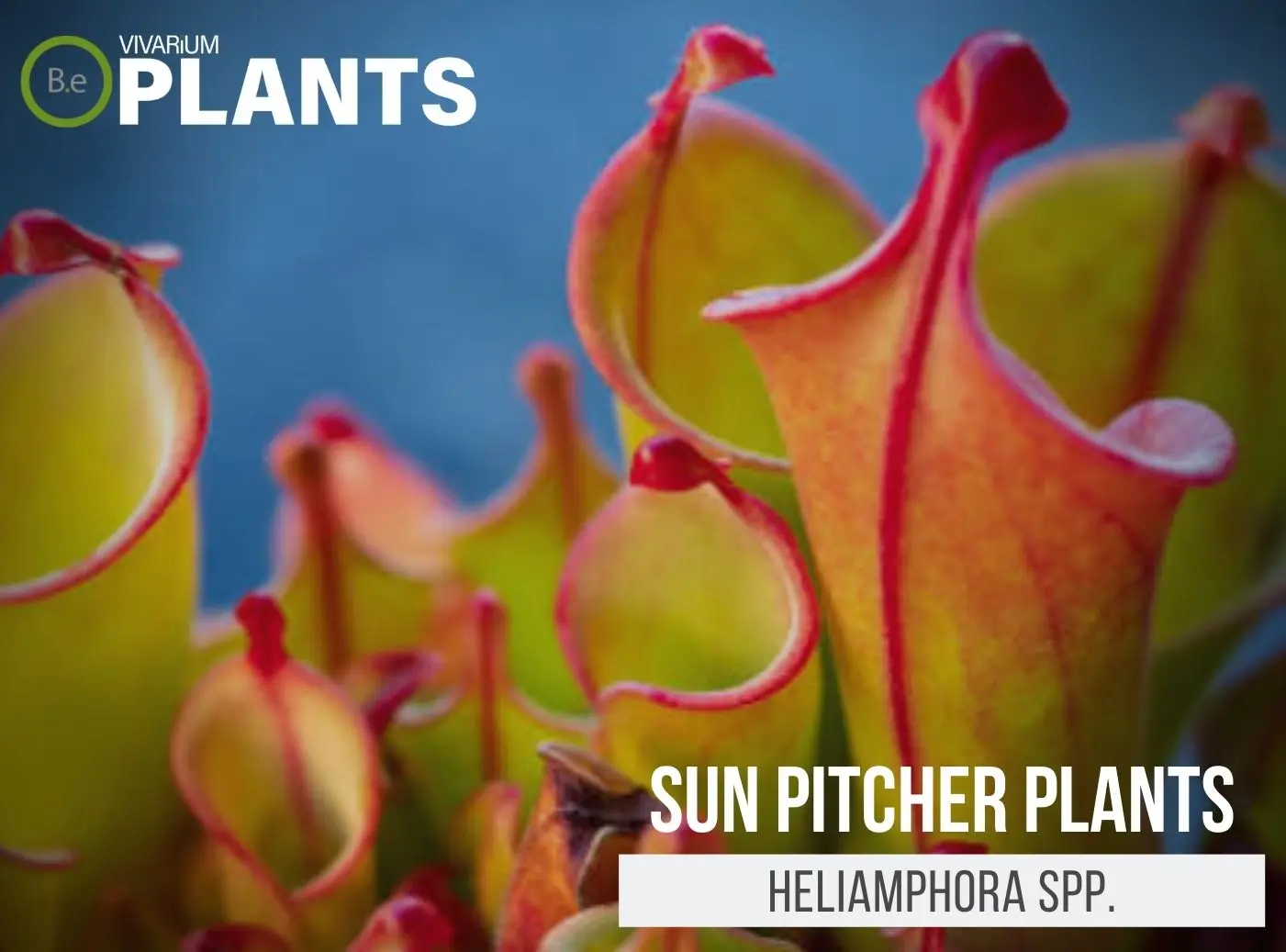Have you ever thought about growing your own Venus Flytrap as a terrarium plant?
These fascinating and carnivorous plants make a great addition to any vivarium but require a unique set of needs in order for it to thrive.
With their captivating jaws and an appetite for unsuspecting prey, they are sure to bring a unique and captivating touch to any terrarium.
In this article, we will explore the key tips and essential items to keep in mind when caring for a Venus Flytrap terrarium plant.
| Quick Stats: | |
|---|---|
| Scientific Name | Dionaea muscipula |
| Common Name | Venus Flytrap |
| Family Name | Droseraceae |
| Habitat | Wetland Areas |
| Temperature | 68°F to 86°F |
| Height | 5-7 inches |
| pH | 4.5-6.5 |
| Lighting | Moderate to High, Indirect |
What Is A Venus Flytrap?
Dionaea muscipula, more commonly known as the Venus Flytrap, is a carnivorous plant native to the wetland areas of the southeastern United States.
Growing to heights of five to seven inches, this plant needs to be placed in a well-draining acidic soil medium and kept evenly moist.
With its vibrant green shade and contrasting red Venus flytrap discs, this plant gives the terrarium an instantly dynamic look.


Venus Flytrap Facts
What’s fascinating about Dionaea muscipula, is that it’s an insect-eating plant.
This species has modified leaves that feature sensory hairs on the exterior of its end discs used to trap its prey.
Once an insect or bug lands on the traps, the leaves will close shut with a snap and the prey will be digested.
Description
Dionaea muscipula is made up of green leaves with red end discs and is surrounded by long stalks.
This plant can reach four to seven inches and has a unique look that really stands out in a vivarium.
The leaves of this plant are generally around two inches in length and feature two to four jagged teeth surrounding the inner edge of the red-end discs.
Habitat
Dionaea muscipula is native to the wetland areas of the southeastern United States.
This plant prefers wet, bog-like environments where the low-nutrient soil and air remain heavily saturated.
The average temperatures in this native habitat will range from the low 60s to the high 80s.
PH Preference
Dionaea muscipula prefers to be in acidic soil conditions with a pH range of 4.5 to 6.5.
It is not unusual to find Dionaea muscipula thriving in wild habitats with pH levels as low as 3.5.
Vivarium Type
There is no set type of enclosure that the Venus Flytrap must be grown in.
In fact, they can do very well in a variety of vivarium types.
One of the most important things to keep in mind when choosing the appropriate enclosure is the amount of space available.
In addition, Dionaea muscipula should also be provided with tropical and moist terrain areas.
Here are recommended vivariums it will do well in:
-
- Paludariums – Half aquatic/ half terrain-based enclosure.
-
- Terrariums – Fully terrain-based enclosures with little to no aquatic features.
Vivarium Placement
This plant should be placed in the foreground around the base of taller plants and hardscapes.
Dionaea muscipula prefers a well-draining substrate with plenty of organic material added to the soil and an inch or two of organic mulch on top.
Substrate
Venus Flytraps prefer a nutrient-free substrate that is slightly acidic and provides good drainage.
Sphagnum peat moss, perlite, and sand are all possible options for achieving this.
If a more hydrophilic substrate like sand or soil is used, it should be preferably mixed with a lighter substrate like peat to provide adequate drainage.
Lighting
Dionaea muscipula prefers a medium to a high amount of light per day.
This plant should be placed in a vivarium where it will receive between 6-12 hours of indirect sunlight.
To simulate the most ideal terrarium lighting in the enclosure, an LED system is the best option.
Buy Venus Flytraps Plants
When considering purchasing a Venus Flytrap, it’s important to ensure that the plant is healthy.
Plants that are already in poor condition may struggle to adapt to a new environment.
When inspecting the plant, pay close attention to the foliage for any signs of yellowing, drying, black spots, or damage.
Additionally, check for any pests or fungal diseases and carefully each “trap” for any red flags.
Remember to click the image below for more information on the current price and other relevant details about the Dionaea muscipula:
Venus Flytrap Care and Propagation
Dionaea muscipula is mostly a solitary plant; it reproduces asexually through the dispersal of its seeds.
This species will grow and spread using its rhizome structure and withstanding the environment and its changes.
How to grow
The best way to propagate Dionaea muscipula is by planting its seeds or dividing the plant’s rhizomes.
To plant the seeds, sprinkle them onto the top layer of the substrate in the pot and lightly press down so that they make contact with the soil.
Make sure to keep the soil moist and watch for the seedlings to start sprouting.
Watering
Dionaea muscipula prefers to be watered two or three times a week.
This plant should have its soil kept damp, but not soaking.
If you water too much, the root system will start to rot which can lead to the demise of the plant.
A drainage layer with a pool of water works best for this plant.
Plants Similar To Venus Flytrap
Incorporating a variety of plants in your enclosure can enhance its appearance.
To achieve a diverse and visually appealing setup, consider including different types of flora that are compatible with the same habitat.
If you are having difficulty obtaining Venus Flytraps or want to explore alternatives, there are other carnivorous plants that may thrive alongside or in place of Dionaea muscipula in your vivarium:
Conclusion
Given their unique needs, the Venus flytrap can place a great demand on beginner terrarium enthusiasts.
With the right knowledge, tools, and other accessories, you can create a nutritious habitat and give your flytrap the loving attention it requires to thrive as a terrarium plant.
Whether you’re looking for an interesting addition to your existing vivarium or want to start a new one, the Venus flytrap is an excellent and unique choice.
With its captivating jaws, nutrient-free soils, and plenty of pests, your flytrap will have everything it needs to grow and catch unsuspecting prey.
Frequently Asked Questions
Keeping a Venus Flytrap (Dionaea Muscipula) alive is not overly difficult. It should be planted in acidic soil in direct sunlight, watered regularly with distilled or rain water, and kept in humid conditions. Fertilizers should be avoided as too much fertilizer can actually kill the flytrap. With proper care and maintenance, these plants can be kept alive for several years.
Yes, Venus flytraps can eat flies. They catch their prey using their modified leaves that clamp shut when an insect or other small animal trips the tiny hairs inside the leaf. The “jaws“ of the Venus flytrap deliver a small shock to help stun the prey before digestive juices go to work on the meal.
If you touch a Venus flytrap, it will not harm you. However, by pressing down or touching the triggers of the flytrap, it senses the pressure and starts to close since it is sensitive to even the slightest touch.
The reaction is a defense mechanism that helps protect the flytrap from being eaten by organisms that could harm it.
This can cause the plant to expend energy, so it’s best to not interact with a Venus flytrap.
Yes, Venus flytraps can survive without bugs, as they are capable of obtaining their nutrients from the soil. However, they generally rely on a diet of small insects to get the nitrogen and other minerals they need for optimal health. Therefore, it is best to supplement soil nutrients with an occasional bug snack in order to ensure your Venus flytrap remains healthy and vibrant.
Venus flytraps turn black due to a combination of factors, including heat, cold, sunlight intensity, nutrient availability, and fungal or bacterial infection. Extremely hot or cold temperatures can cause their leaves to blacken, while too much direct sunlight can lead to scorching. A lack of adequate nutrients can also cause discoloration or death of the plant. In some cases, fungal or bacterial infections can cause plant tissue to turn black.




